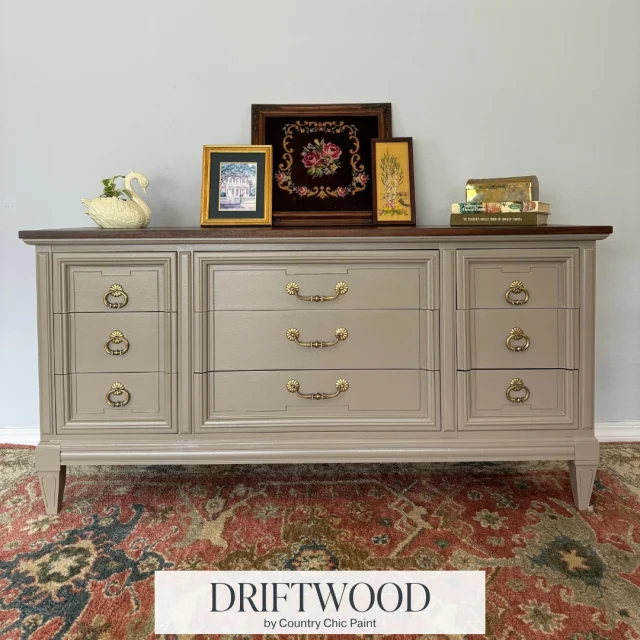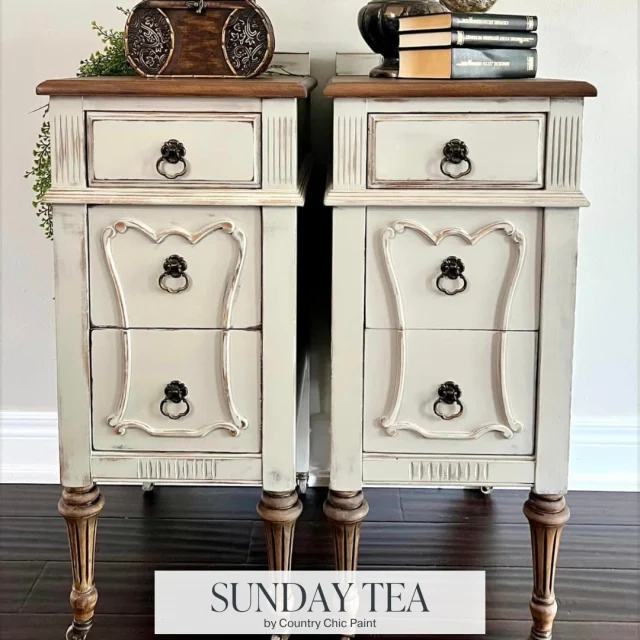
VOC Testing + What Makes Country Chic Paint Environmentally-Friendly?
If you enjoy painting your home and furniture, you must have heard lots of chatter about “VOCs” in paint. But you might wonder, what are these so-called Volatile Organic Compounds? When can a company truly call their paint low VOC versus ultra low VOC? And to make things even more convoluted, are paint pigments included in the VOC count?
Most importantly, we should be asking if VOCs are harmful to our health or our family’s health. With the explosion of popularity in furniture paint, many companies are making claims about the safety of their products. We believe that it is crucial to ask questions about the validity of these claims. Often claims go unsubstantiated and we want to change that.
Instead of simply stating that we are committed to reducing the environmental impact of our products, we want to explain to you in detail what VOCs are all about and if they are truly harmful to our well-being and to the environment.
To take it a step further, we also want to share our test results with you in an effort to create openness and conversation around VOCs and harmful chemical additives. We feel that you have the right to know the details of the products you are using in your home.
What are VOCs?
Volatile Organic Compounds (VOCs) are gases that are released into the air from ordinary products such as paint, cleaning products, furniture, flooring, and cosmetics. VOCs can have short-term health effects such as headaches, respiratory issues, nausea, dizziness, and other ailments.1 Certain VOCs have also been proven to cause cancer in animals and thus are suspected to cause cancer in humans.1
Unfortunately, there are not many current source-based articles or research available about the long-term health effects of VOC exposure in our homes, and we believe there is a lot of research left to do to ensure your safety. Not only do VOCs have an impact on those who use the products and live in the space in which they are used but many VOCs are also to blame for the formation of smog, which has adverse effects on the environment and human health.2 In order to improve air quality, both federal and provincial/state governments have set limits on the amount of VOCs in g/L (grams / liter) that products can contain. For example, the Canadian limit on paint with a flat sheen has a limit of 100 g/L.3
The state of California has been a leader in the USA by setting VOC concentration limits for consumer products; currently their limit is 50 g/L for paint that has a flat sheen finish, while the EPA (Federal) regulation allows for up to 250 g/L.4 The EPA standard also allows up to 5 g/L for a paint to be called zero VOC.
What about Pigments?
Some companies advertise their paint as zero VOC, and while it might be true for the base paint, pigments that may contain considerable amounts of VOCs are added to the paint and are not always taken into consideration.
In fact, in 2012 there was a settlement between two large paint manufacturers and the Federal Trade Commission, requiring the paint companies to stop making deceptive claims of “zero VOC” because even though their base paint had no VOCs, their tinted paints did contain VOC levels in considerable quantities.5 Pigments should most certainly be taken into account when making VOC claims.
Country Chic Paint is an Ultra Low VOC Paint
We want to create products that are not detrimental to your health or the environment, therefore we have chosen to go above and beyond industry standards by formulating paint with ultra low VOCs. In addition, the pigments used in the Country Chic Paint products are all ultra low VOC, so you can rest assured that the colorants are not adding high levels of VOCs to the paint.
When our products are formulated and manufactured, VOC levels are calculated based on the ingredients used.
To further ensure the safety of our customers, we tested our paint according to the ASTM D6886 standard. We were very pleased to learn that the tested VOC level of the All-in-One paint came back at <1 VOCs! Want to see the test results for yourself? Click here to view the report.

VOC Testing - Not All Tests Are Equal
Over the years, several different test methods have been developed to analyze VOC levels in paint and other products. Currently, there are several accepted methods of testing and certification, each having a slightly different scope and accuracy. Some only report a narrow subset of VOCs, and some only measure the VOCs present in the base of the paint without considering the pigments used. Others report all VOCs, but do not consider other types of harmful chemicals that may be present. Still, others operate on a “pass/fail” system where they report 0 VOC content if they are below a certain threshold.
In the proceeding section, we will outline two testing methods in particular to help you understand the different standards.
EPA Method 24 vs ASTM D6886
EPA Method 246 is a commonly used testing method in the paint industry, despite the fact that it is recognized by EPA itself to be reasonably inaccurate in measuring the results of low VOC, water-based paint.7 In fact, it is an unreliable test for paint containing VOCs less than 100 g/L.8 EPA also does not take all types of VOCs into account,9 excluding those which contribute to smog formation. At Country Chic Paint, we cannot with a clear conscience simply state that our products are low or no VOC according to the EPA Method 24 standard, as the test method is inaccurate for our products.
The ASTM D6886 testing method is much better suited to water-based paint with low VOC levels and is offered through independent labs such as Berkeley International, Intertek and Eurofins.10 This method was developed specifically for paint with less 50 g/L content, and also measures VOC content at higher levels.11 At Country Chic Paint, we are dedicated to providing you with top quality products that are safe and do not pose a health risk. That is why we have opted to have our paint tested to ASTM D688612 standards which is considered to be 10 times more accurate than EPA Test Method 24!13
In our 2017 ASTM D6886 tests, our All-in-One Decor Paint was measured to contain <1 VOCs! However, since it’s always possible that there are trace amounts present in any paint, we’ve decided to call our paint ultra-low VOC. In an effort to provide complete transparency, we have opted to make this report available to you. Instead of you having to take our word for it, you can view the report for yourself here.
Country Chic Paint is Safe for Children’s Furniture
It is our mission to provide safe paint that can be used for any furniture or DIY project. Because we know that many of our customers enjoy using our products to decorate their children’s bedrooms and nurseries, we felt it was necessary to do testing to make sure our products are free from harsh chemicals that can negatively impact a child’s health. Therefore, we also submitted our products for independent testing according to the strict European Toy Safety Standards (BS EN 71-3). This standard restricts the release of lead and eighteen other toxic chemicals, such as arsenic, cadmium and mercury.
All-In-One Decor Paint was tested and found to comply with the Toy Safety Standard (BS EN 71-3 - migration of certain elements). This means that our paint is proven to be safe for use on children’s toys and furniture!
You can view the test reports for the All-In-One Decor Paint here.
Ask Questions!
When looking for a paint to use in your home, do not be afraid to do a little digging and demand transparency by asking for the appropriate test reports. Remember: EPA Method 24 testing will not give accurate results for VOC contents; ASTM D6886 is the most reliable test available for water-based paint.
We would never risk the health of our families, and we would never ask you to, either. If taking care of your health and the earth is important to you, we encourage you to make sure the paint products you are using have the same ethics and integrity that you do.

Technical Data Sheets
Click on the appropriate links below to download our technical data sheets.













